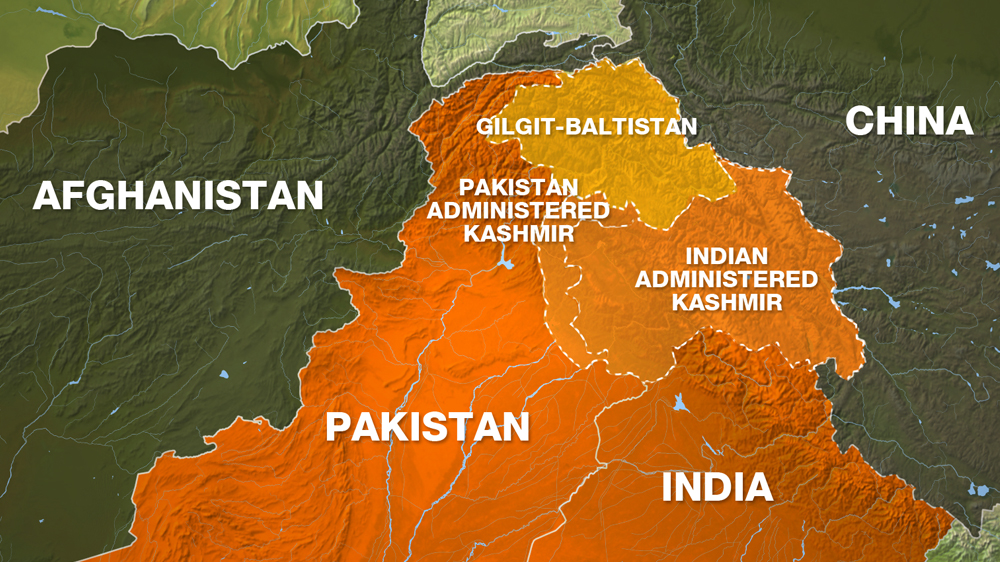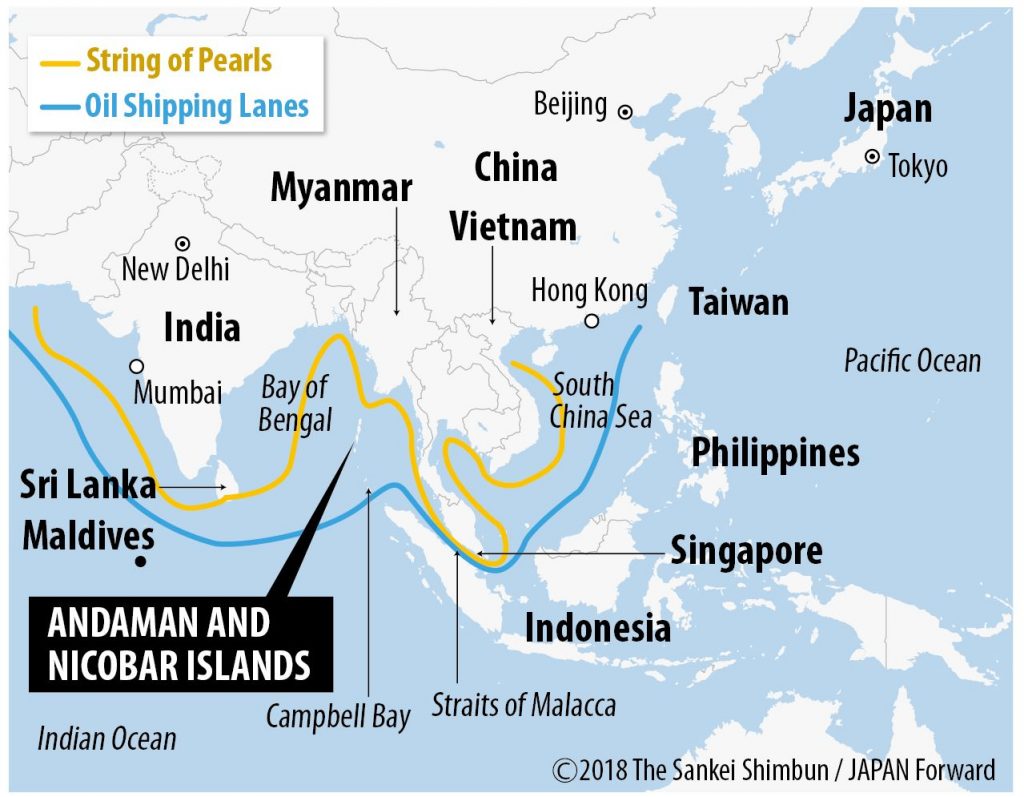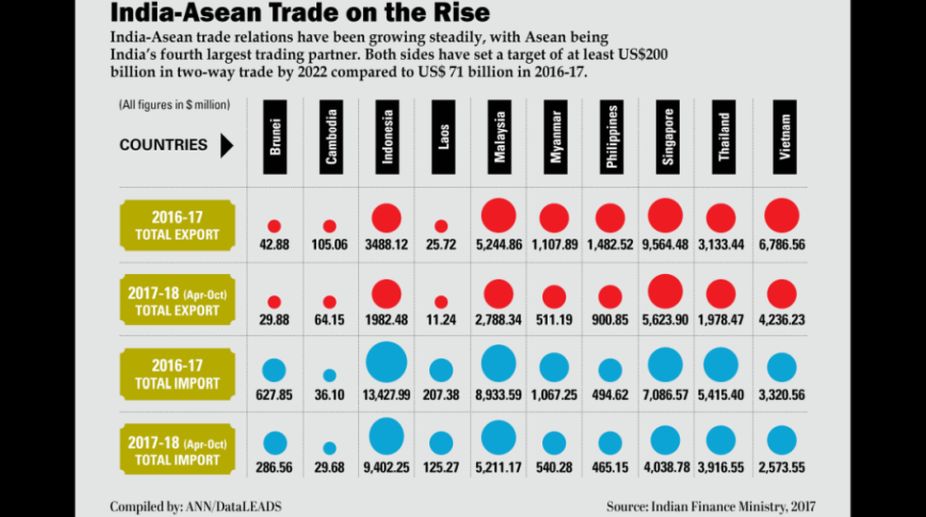China’s Great Game
China thinks that it is a rising power ready to overtake the US on the world stage. It sees the formation of the Quad as an obstacle to stop its world domination aspirations.
According to Open Source Intelligence (OSINT), China has increased fortifications of its positions, modernised airports, increased patrolling using nuclear submarines, built new bases from Ladakh to Taiwan. The second-highest officer in the Chinese military and top politburo member General Xu Qiliang told the National People’s Congress (what the Chinese call their policy-making body equivalent to a Parliament) in the second week of March 2021 that Beijing will increase its defence budget as a threat of war looms over the South China Sea and with India.
China feels that it faces the Thucydides trap; a situation where it sees itself as an ascending power and the United States as a declining power. Beijing sees the formation of the Quad by India, Japan, the United States, and Australia as a threat to its becoming the dominant force. The heads of governments of these countries met for the first time and listed freedom of navigation, rule-based engagement, building an alternate supply chain away from China, and collaboration to fight pandemics as the fundamental goals of democratic nations. The Quad in many ways is a platform to protect the interests of not only the principal countries but also Taiwan, the Philippines, Malaysia, Vietnam, and Indonesia with whom China has running conflict due to its greedy ambitions in the Indo-Pacific.

China's projects its military as a domination weapon
China is also innovating in warfare through intense hybridization. In this mode, warfare is no longer restricted to land, air, and sea but also on the cyber and potentially the space domain. China uses Pakistan as a proxy to keep India tied down on its western flank. Islamabad, through its Inter-Services Intelligence (ISI), uses Afghanistan as a breeding ground to train terrorists for deployment across the world starting with India. Beijing has also been very active in cyber warfare. For example, in October 2020, it launched a cyber-attack on power facilities in India’s richest city Mumbai.
While the US, Japan, and Australia are ready to get into a military alliance, India is still dithering so as not to antagonise the Russians who are its main suppliers. New Delhi is also unsure of Washington’s resolve to engage Beijing— on the one hand, Washington talks about India as a friend and partner and on the other hand, sends its warships to invade what New Delhi considers its Exclusive Economic Zone (EEZ).

The complex geography of the Himalaya
However, informal tie-ups have started. Tokyo is providing developmental aid to New Delhi to develop many of the unoccupied smaller islands in the Nicobar Islands as listening posts to observe Chinese warships, especially its submarines. The US and Japan have set up an extensive set of underwater listening systems to capture sounds of submarines and is already providing India with that data. The Andaman and Nicobar Islands sit on the mouth of the Strait of Malacca through which 90% of China’s energy resources and export goes through. India already has a strong presence in the Andamans and is looking to upgrade and augment its assets even more.
Over the last decade, China has been creating new artificial islands at sea and turning them into a military base or setting up military bases in poor countries by trapping them into debt. Already, Sri Lanka, Laos, and the Maldives have been ensnared by this debt diplomacy. Through this plan, Beijing flashes its flagship Belt Road Initiative (BRI) promising to bring countries into its supply chain through infrastructure upgrades. Through exorbitant loans, it traps client states unable to service debt by taking over that infrastructure.

Japan is working with India to improve its control of the Malacca Straits
China is also innovating in warfare through intense hybridization. In this mode, warfare is no longer restricted to land, air, and sea but also on the cyber and potentially the space domain. China uses Pakistan as a proxy to keep India tied down on its western flank. Islamabad, through its Inter-Services Intelligence (ISI), uses Afghanistan as a breeding ground to train terrorists for deployment across the world starting with India. Beijing has also been very active in cyber warfare. For example, in October 2020, it launched a cyber-attack on power facilities in India’s richest city Mumbai.
While the US, Japan, and Australia are ready to get into a military alliance, India is still dithering so as not to antagonise the Russians who are its main suppliers. New Delhi is also unsure of Washington’s resolve to engage Beijing— on the one hand, Washington talks about India as a friend and partner and on the other hand, sends its warships to invade what New Delhi considers its Exclusive Economic Zone (EEZ).

Training is already resulting in improved productivity and savings
For example, Colombo was forced to cede its southern port of Hambantota to Beijing because it was unable to repay its debt. Credible investigation reports say that China and Cambodia inked a secret deal where Beijing will be allowed to use the Ream Naval base in the Gulf of Thailand for 30 years and a provision to automatically extend every 10 years. Experts say that an agreement would be a violation of Cambodia’s constitution. Naturally, both countries have dismissed these reports. Cambodia is China’s closest ally in the Association of South-East Asian Nations (ASEAN).
The US Indo-Pacific officers told a Congressional hearing that China has recently upgraded an airport in Magan, which is only 200 kilometres from Taiwan’s capital Taipei. So, the fear is that the People Liberation Army’s (PLA) air force will be able to drop a bomb on Taipei in 7 minutes. To counter this threat, Taiwan has deployed many US-made anti-aircraft and offensive missile and radar defence systems. It has also geared its force to be prepared to fly in larger numbers as a quick reaction to a Chinese invasion.

Japan is working with India to improve its control of the Malacca Straits
On its Himalayan border with India, China has upgraded its airbases at Shigaz (Xigaze Airport) located only 200 kilometres from Sikkim and Lhasa which is very close to the strategic Doklam pass. It is currently modernizing the Chamdo Bangda airbase located 130 km from the Arunachal Pradesh border. OSINT analysts cited satellite photographs that a massive upgrade was underway at Lhasa, the capital of Tibet, with defensive systems and what look like missile silos.
Meanwhile, under the pretext of collaborating with world navies to fight off pirates, China has increased its patrolling of the African coasts along with its client state Pakistan by using its military base in Djibouti, near the Gulf of Aden. India too has adopted aggressive postures vis-a-vis Chinese ships— in 2020, India pushed back a Chinese ship that claimed it was doing “research” in Indian waters.

Naval bases of India, US, and China
All this is part of China’s new Great Game. In the 19th and 20th Centuries, colonial Britain and Russia were engaged in such a game to control the Himalayan range and access to the warm waters of the Sindhu Sagar (or the Arabian Sea). A new book “A New Silk Road -- India, China And The Geopolitics of Asia” postulates that China is engaged in a game for world dominance using a cash-strapped Russia as a willing playmate.
Veteran journalist and author Kingshuk Nag theorises that Beijing's New Great Game in the Himalayan range is to continue the takeover of large parts of Ladakh to suit the interests of the China-Pakistan Economic Corridor (CPEC), a key element in its Belt and Road Initiative (BRI) while simultaneously continue trade ties with India and the world. Interestingly, Nag draws a parallel between the East India Company (EIC) which came to India for trade but ended up conquering large tracks of the country. Unlike the EIC, China does not have a single company. It uses the presence of its products to create the same effect— dependence. Just like the EIC which sent raw materials to England and sold back finished goods, China imports raw materials like iron ore from India and sells back electronic products such as cell phones.

China's New Silk Road for World Domination
India is aware of this strategy. However, till recently, it lacked the political will to confront it. New Delhi refused to join the Regional Comprehensive Economic Partnership (RCEP), a free trade arrangement (FTA) between the Association of Southeast Asian Nations (ASEAN) countries. This Chinese-sponsored deal will enable Beijing to flood Indian markets with, what many China-watchers say, sub-standard, prison-labour made finished goods. "Analysts say that the Chinese push their products so tactfully that anti-dumping laws cannot be used to prove this," says Nag. Using Trojan strategies, Chinese cell phone companies like Xiaomi, Oppo, Vivo and OnePlus set up India operations and sponsor sports events and movies to buy consumer mind space to reduce the brand value of Nokia, Motorola, Siemens, and Samsung. New Delhi does impose anti-dumping duties on Chinese imports; for example, solar cells, the other large import from China will soon become very expensive because of anti-dumping duties imposed by India.
Subsequent developments vindicated New Delhi’s decision not to join RCEP. Since ASEAN signed the deal with China, it has seen a ten-fold spike in adverse trade imbalance– from US$ 10 billion in 2010 to US$ 102 billion in 2019. As a collateral damage, Indian exports to ASEAN fell by 4.4% while imports surged by 29.2% between 2012 and 2020. Analysts say that the imports were Chinese goods sent to India under the cover of RCEP. A Brookings Institute study noted that between 2016-18, two significant events affected global GDP. The US-China trade war brought down global GDP from 3.5% to 2.7% while the Covid-19 virus that many experts say originated in Chinese Wuhan province is sending the global economy into recession.

India's Trade with RECP countries
Even though the refusal to join RCEP will affect the perception of New Delhi’s Act East Policy, it is looking at other groupings to regenerate engagement with ASEAN. India already has FTAs with most ASEAN countries individually and with ASEAN as a block.
While ASEAN did suffer from the former, it was less susceptible than other Asian groupings like South Asian Free Trade Agreement (SAFTA which includes India, Bangladesh, Nepal, Sri Lanka, and Pakistan) or the Northeast Asia equivalent which includes China, Hong Kong, Mongolia, South Korea, and Taiwan. Because of US Government (USG) policies, US companies invested heavily in ASEAN to move manufacturing from China to Thailand, Indonesia, Singapore, and Vietnam. In sharp contrast, although the region benefitted from the US-China trade war, it was extremely vulnerable to the Covid-19 pandemic with sharp negative growth for Thailand, Singapore, Malaysia, and Cambodia.

India-ASEAN trade on the rise
ASEAN countries are too small by population, economy, and geography to have a large domestic consumption base; hence, they are mostly export-driven looking to serve multi-national companies (MNCs). Even though it sees short-term gain from the migration of manufacturing from China, the effect on ASEAN will be large in the medium to long term. Especially if the pandemic continues resulting in a global GDP decline.
What is worse is that while no major Indian brand has a presence in China, Indian companies like Infosys, Tata Consultancy Services, NIIT, Dr Reddy's Lab, Mahindra & Mahindra, Lakshmi Machine Works, Tata JLR and Sundram Fasteners have offices in China and training Chinese youth on high-tech services. Since Indian media is largely controlled and influenced (monetarily and philosophically) by the Chinese Communist Party (CCP), border issues and disputes are hardly known to the larger population. In sharp contrast, while the Indian population was fully aware of these disputes, a long-term boycott of Chinese goods started in good earnest. However, this fizzled out because many media outlets and some political parties are complicit with the short-term gains that China offers them.

Indian support for Tibet's independence is high
Proving Nag’s theory of China’s duplicity, Beijing preached peace and trade as soon as the disengagement started in Ladakh. Chinese Foreign Minister Wang Yi said that “initiating confrontation will not solve the problem” and “dialogue and consultations” is the way forward. Strangely, while a “synchronized disengagement” of the standoff at Pangong Tso area where India was in an advantageous position started, there has been no progress in other areas such as the Gogra-Hot Springs area, Demchok, and Depsang plains where China has the early mover advantage. Beijing even went on to say that New Delhi should be happy with whatever disengagement was achieved.
Naturally, New Delhi is not very impressed by these overtures. Many analysts are puzzled as to why India even accepted the withdrawal from an area of strength. To deny China continuous access to Indian markets, New Delhi has identified around 330 sectors including electronic and electrical items where India has large-scale dependence on China.

India-China standoff points in Ladhak
It is in India’s interest to deny China any more market (consumer, financial, and technological) access as well as the export of crucial materials such as iron ore, coal, food, etc. It should take advantage of the US, Japanese, Australian, and European Union’s desire to develop an alternate supply chain and encourage the movement of manufacturing and related ecosystems to India. Uttar Pradesh is already developing to be the most favoured destination of many of these companies fleeing China. That state has created a landholding larger than Switzerland to set up manufacturing facilities.
Economic and political stability is the most important factors that will determine a full-scale migration. At the same time, political parties with a vision for India should restart and sustain the campaign of boycotting Chinese products even while supporting free Tibet groups.
Given the rambunctious nature of the Indian democracy, communication of these policies to the population at large is crucial.

Boycott China products campaign is still simmering